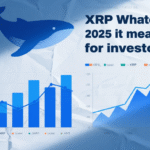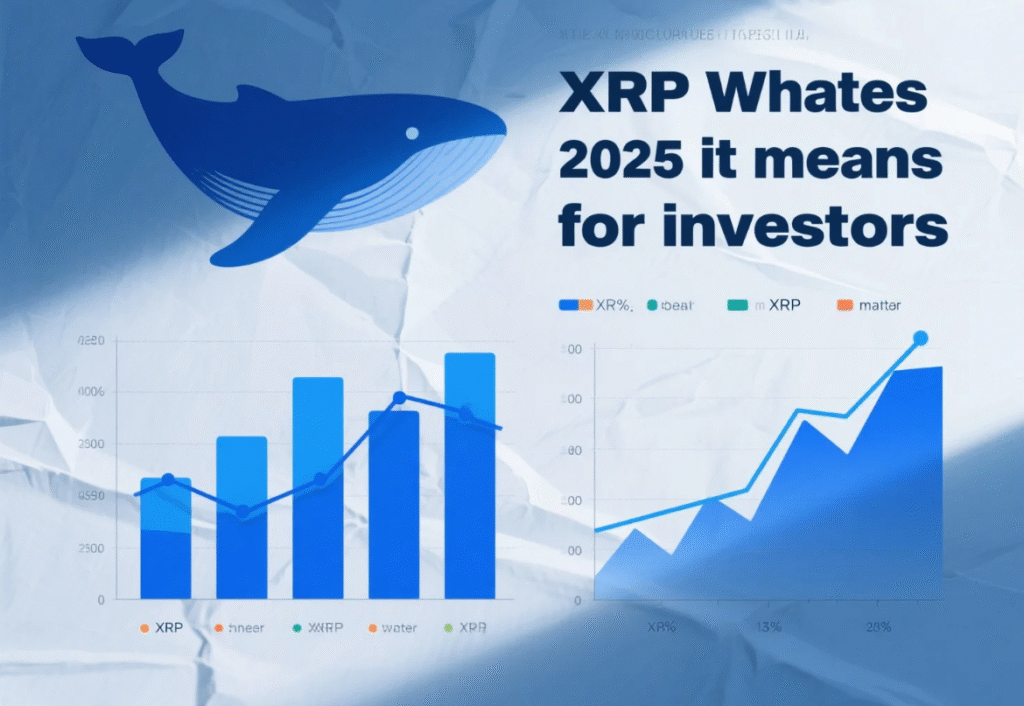Savvy traders never pay full fees. Use these referral codes to save for life: Binance WZ9KD49N / OKX 26021839

Introduction

- XRP’s market position in 2025: A top-10 cryptocurrency by market cap
- Key investor question: Who holds the most XRP?
- Article goal: Uncover the XRP rich list and its implications for the market
Understanding XRP Distribution
Total XRP Supply (100 Billion Tokens)
- XRP has a fixed supply of 100 billion tokens, created in 2012 by Ripple Labs
- No additional tokens can be minted, unlike Bitcoin or Ethereum
Circulating vs. Locked Supply (Ripple’s Escrow Mechanism)
- ~55 billion XRP locked in escrow, released monthly at ~1 billion tokens
- In 2025, ~45–50 billion XRP are in circulation
Distribution Traits: Higher Concentration Than Bitcoin or Ethereum
- XRP’s ownership is more concentrated, with Ripple and large holders dominating
- In contrast, Bitcoin and Ethereum have broader distribution via mining and staking
The Biggest XRP Holders in 2025
Ripple Labs: Official Custody and Allocation
- Ripple holds ~40–45% of total XRP supply through escrow and company wallets
- Used to fund development, bank partnerships, and On-Demand Liquidity (ODL)
Founders & Early Team Members (e.g., Jed McCaleb’s Past Holdings)
- Co-founder Jed McCaleb held 9 billion XRP, mostly sold off by 2022
- Other founders likely retain significant but less transparent holdings
Institutional & Exchange Wallets
- Exchanges like Binance, Kraken, and Bitfinex hold large XRP amounts for users
- Institutional wallets (banks, funds) have grown with Ripple’s ODL adoption
Top 10 Whale Wallets (On-Chain Address Data)
- Blockchain data shows the top 10 wallets control ~30% of circulating XRP
- Anonymous addresses, often tied to Ripple, exchanges, or funds
XRP Rich List — By the Numbers
Share Controlled by Top 1% of Addresses
- Top 1% (~2,000 addresses) control ~85% of circulating XRP
- Higher concentration than Bitcoin (~50%) or Ethereum (~60%)
Top 100 Addresses vs. Retail Wallets
- Top 100 wallets hold ~60% of XRP, while millions of retail wallets hold ~10–15%
- High concentration amplifies whale influence on price
Exchanges vs. Individual Holdings
- Exchanges account for ~20% of circulating XRP, mainly for trading and custody
- Direct individual ownership is declining as users store XRP on exchanges
Distribution Changes Compared to 2021 and 2023
- 2021: Top 1% held ~90%; 2023: ~88%; 2025: ~85%
- Slight trend toward decentralization, but still highly concentrated
Why Whale Ownership Matters
Impact on Market Liquidity
- Large whale sales or accumulations can trigger significant price swings
- Ripple’s ODL liquidity relies on XRP from whales and escrow
Potential Price Manipulation Risks
- Large wallets could coordinate to pump or dump prices, though Ripple denies this
- Regulatory clarity in the U.S. by 2025 reduces manipulation risks
Implications for Long-Term Stability
- High concentration may erode retail investor trust in XRP’s decentralization
- Bank adoption, however, boosts XRP’s legitimacy
Signals Retail Investors Should Watch
- Track whale wallet activity on-chain to anticipate price movements
- Monthly escrow releases (~1 billion XRP) may create short-term selling pressure
Expert Insights on XRP Distribution
Analyst Views: Will Concentration Decrease?
- Some analysts predict broader distribution as ODL expands
- Ripple’s dominant holdings slow the path to decentralization
Institutional Entry Reshaping Ownership
- Banks and fintechs (e.g., SBI) are increasing XRP holdings, reducing individual shares
- Adds stability but reinforces institutional control
XRP’s Role in Cross-Border Payments and CBDCs
- XRP leads in cross-border payments, with 70+ bank partners by 2025
- Some countries test XRP for CBDCs, driving institutional demand
Outlook for XRP Holders
Ripple Ecosystem Growth Impacting Holdings
- RippleNet and ODL boost XRP demand, potentially increasing whale wallet value
- XRPL’s NFT and DeFi projects diversify ownership
Escrow Release Plan and Market Pressure
- ~12 billion XRP released annually from escrow may pressure prices short-term
- Ripple often buys back XRP to stabilize the market
Trend Toward Decentralized Distribution
- XRPL community and independent nodes may reduce concentration over time
- Ripple’s influence likely persists in the near term
Long-Term Investors vs. Short-Term Speculators
- Long-term holders bet on ODL and CBDC potential despite volatility
- Short-term traders capitalize on whale moves and regulatory news
Conclusion
- Summary: In 2025, XRP remains dominated by Ripple, whales, and institutions
- Key takeaway: Whales significantly influence price and liquidity
- Open question: Will XRP become more decentralized in the next 5 years, or stay in the hands of a few big players?
FAQ
Who Owns the Most XRP in 2025?
- Ripple Labs holds the largest share (~40–45%) via escrow and company wallets, followed by exchanges and anonymous whales.
How Much XRP Does Ripple Still Hold?
- Ripple controls ~45 billion XRP, mostly in escrow, releasing ~1 billion monthly.
What Percentage of XRP Is Owned by Whales?
- Top 1% of wallets control ~85% of circulating XRP; top 10 wallets hold ~30%.
Is XRP Distribution Becoming More Decentralized?
- Slight decentralization trend (from 90% in 2021 to 85% in 2025), but still highly concentrated compared to Bitcoin or Ethereum




